|
Images may appear blurry in some web browsers. We recommend opening these links in Google Chrome.
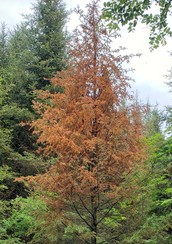 |
|
In early June we started getting reports of balsam fir trees rapidly changing from green to rusty red and dying in just a matter of weeks. Reports and observations are still coming in at the time of this writing, so this article gives a brief synopsis of what we’ve seen so far this year. Read more... |
You can help keep native elm trees in the forests of Wisconsin! The US Forest Service continues to work on a project to identify Dutch elm disease-tolerant American elms native to Wisconsin forests. The goal of the project is to identify and propagate survivor American elms, especially from the colder hardiness zones 3-4, and develop a series of clone banks. Selections would eventually be screened for tolerance to DED. Ultimately, the goal is to make DED-tolerant American elm available for reforestation in northern areas, particularly as a component on sites currently forested by black ash. Read more...
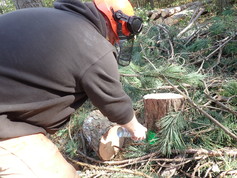 |
|
Less than a one-hour drive from Milwaukee, Kettle Moraine State Forest – Southern Unit (KMSU) offers more than 22,000 acres of glacial hills, kettles, lakes, prairie restoration sites, pine woods and hardwood forests. KMSU is one of Wisconsin’s most visited state properties with over 100 miles of mountain biking, horseback riding, snowmobiling and hiking trails. In addition to its ecological and recreational value, KMSU remains a productive and sustainable forest that supports the forest products industry in southern Wisconsin. Read more... |
Many people know that invasive species are a concern in Wisconsin’s natural communities both on land and in water. But fewer people are aware that invasive species are not a new threat and that over time, we have developed strategies to reduce their spread and limit their damage to a tolerable level. Read more...
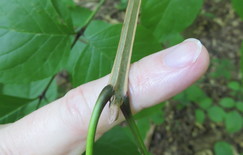 |
|
Many people interested in trees know about Wisconsin’s white, green and black ash species. However, there’s a fourth species that fewer people know about. Blue ash, Fraxinus quadrangulata, occurs naturally only at a few sites in Waukesha County. It can easily be identified by the cork ridges on the twigs, which give them a four-sided, square appearance. The tree was given its name because of the blue dye that is produced by soaking the inner bark in water. Read more... |
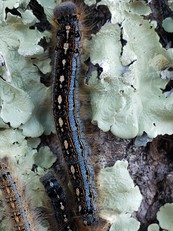 |
|
Forest tent caterpillar is a native insect with periodic outbreaks. Reports of high populations have been coming in this spring from the towns of Nokomis, Three Lakes and Sugar Camp in Oneida County. There is some defoliation in these areas, but the geographic extent of damage is still limited. When looking for caterpillars in northeastern Wisconsin, it was not difficult to find at least one or two of them, which is an increase from past years when it was difficult to find any caterpillars at all. Read more... |
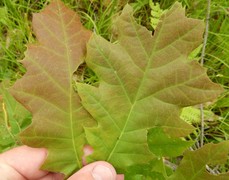 |
|
Have you noticed any oaks looking kind of red this spring? Or maybe you’ve noticed that the leaves at the tips of the branches are looking red or maroon? This is not a cause for concern, but keep reading if you are interested in learning why this happens. |
 |
|
Basswood trees in Forest, Marinette and Oconto counties are looking very poor this year. The leaves are damaged, misshapen or completely missing. Several things seem to be happening, but the worst offenders seem to be a late frost/freeze and a suspected infestation by introduced basswood thrips. Read more... |
Statewide
Central
Northeast
Northwest
South central
Southeast
West central
Forest products news
Urban forestry news
|